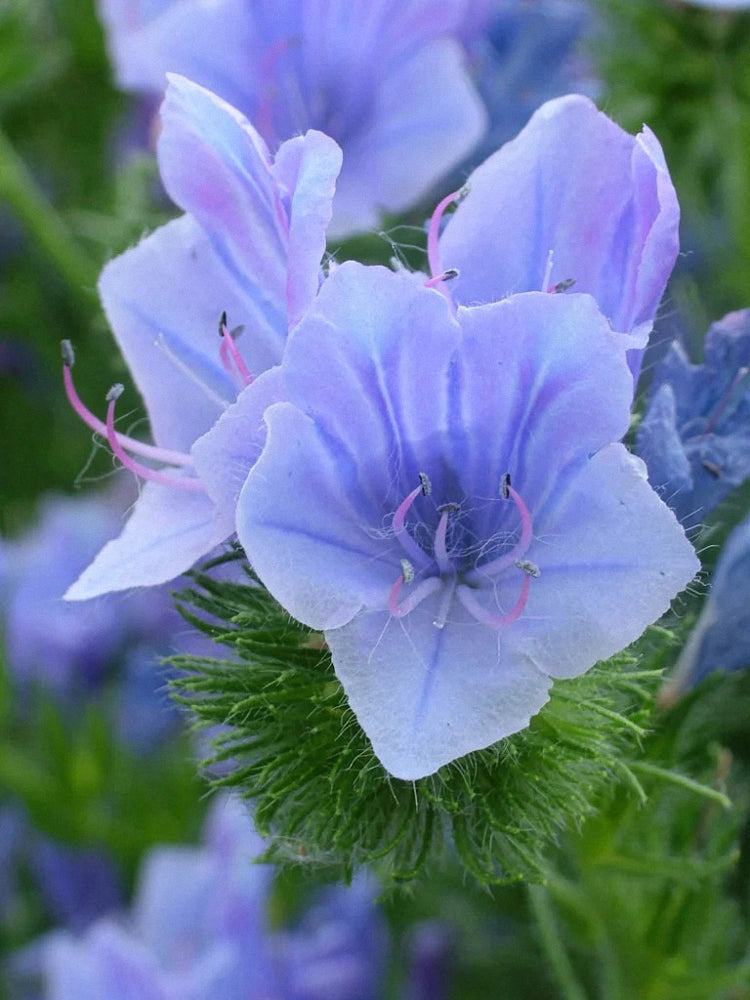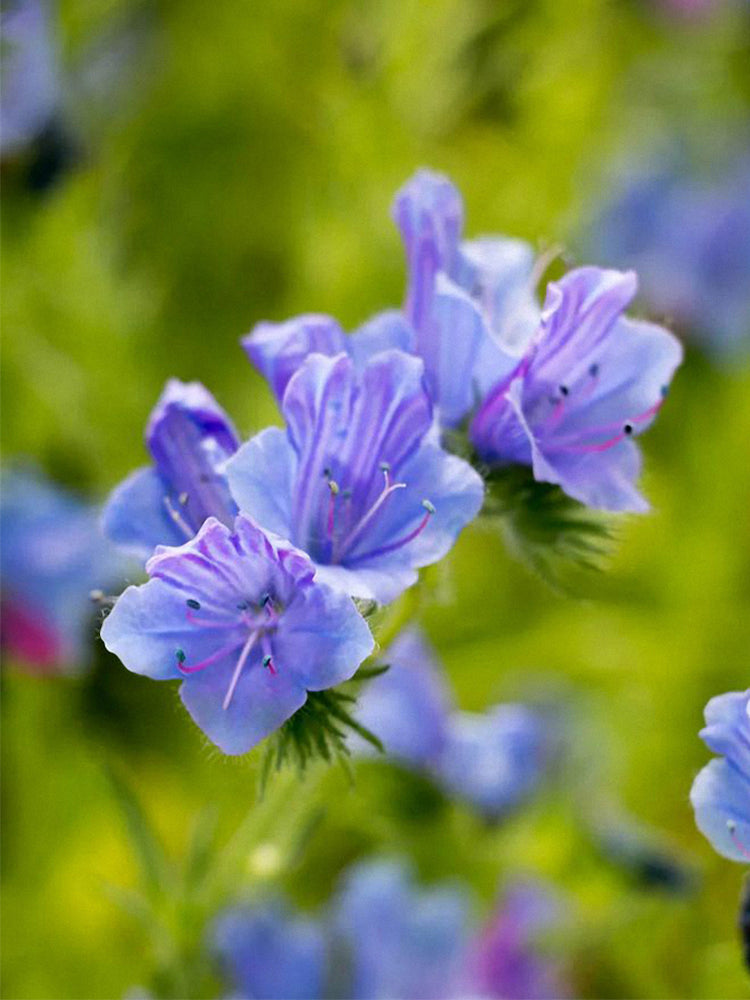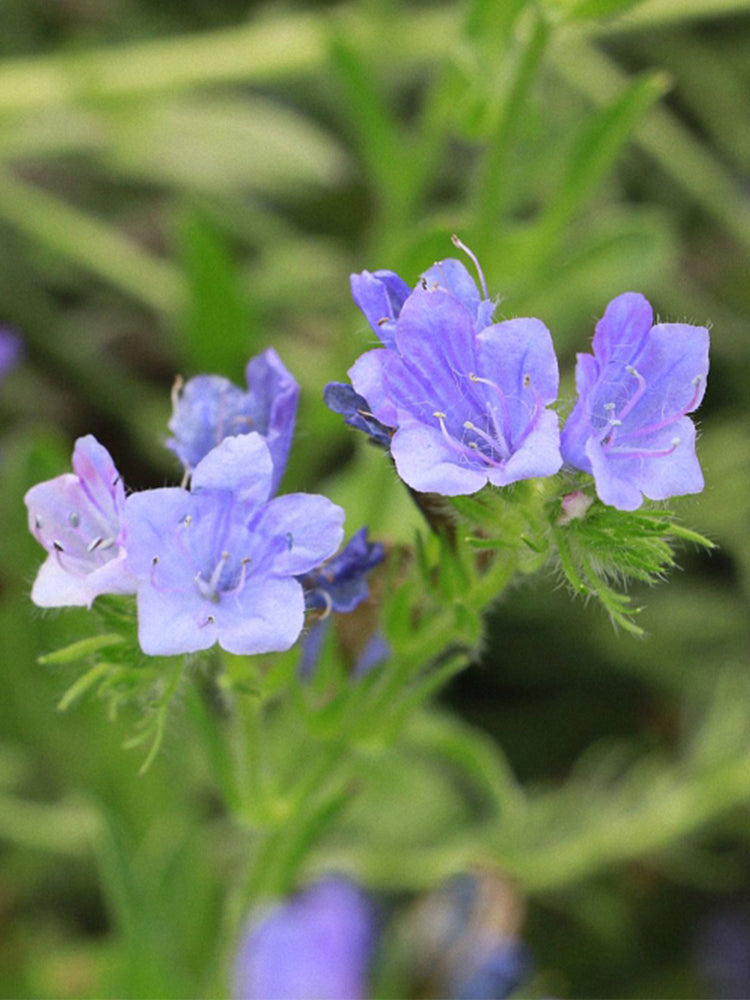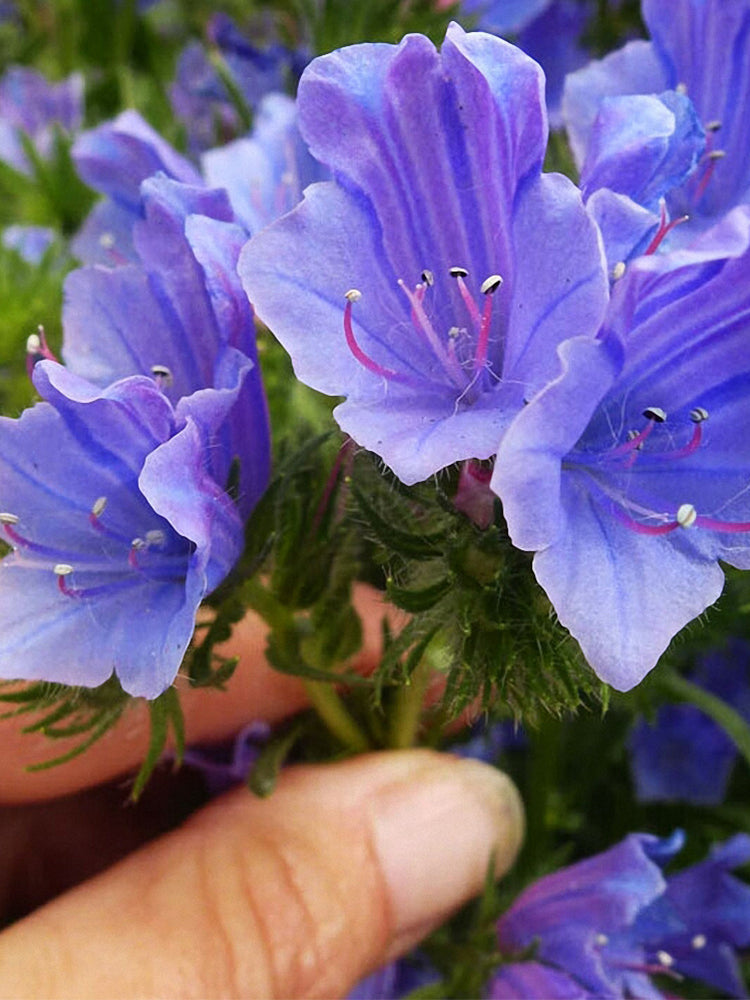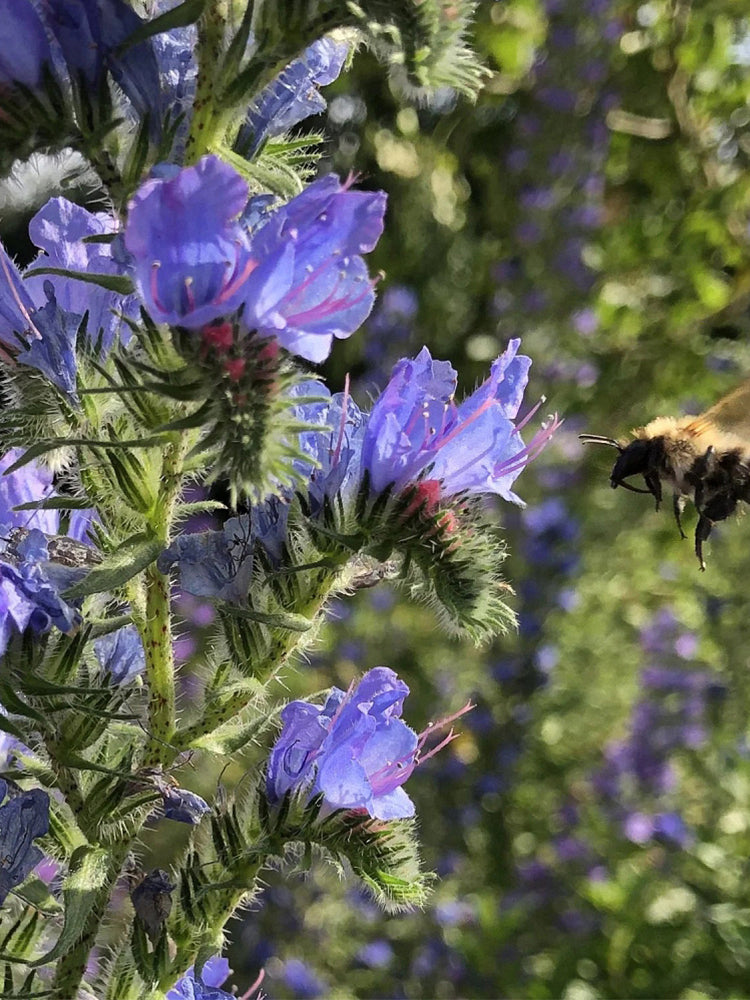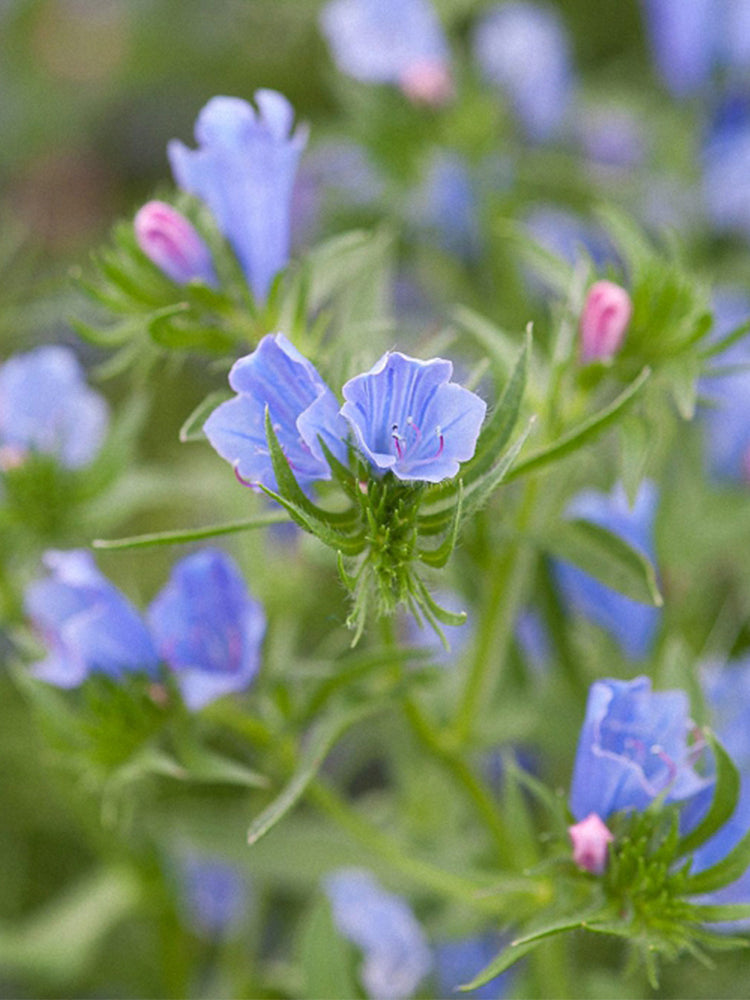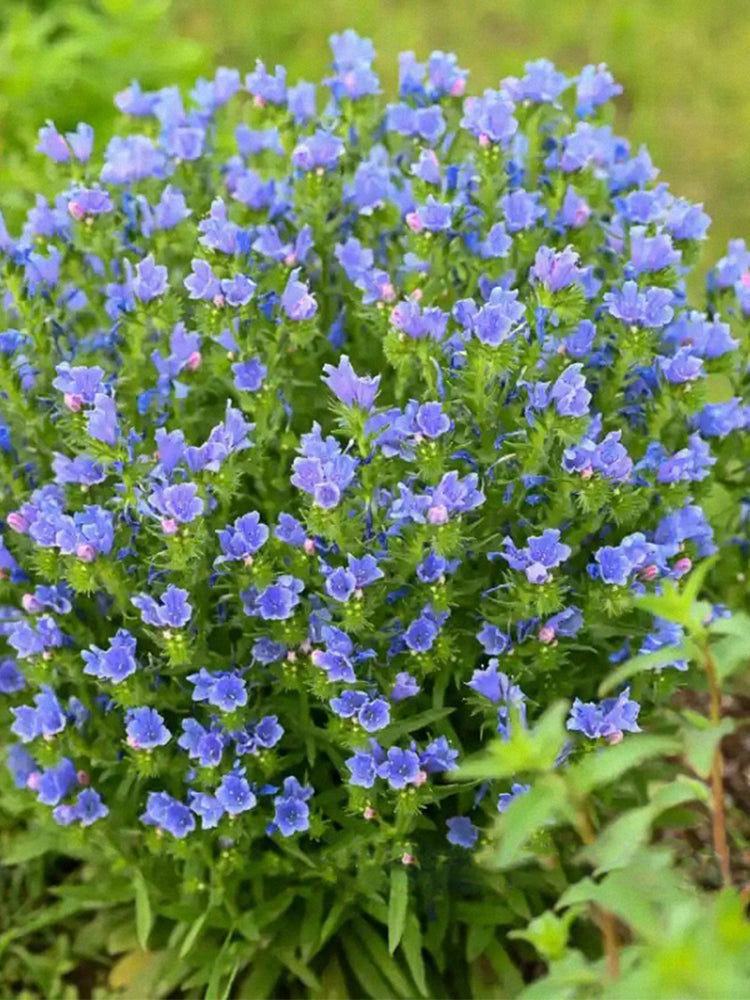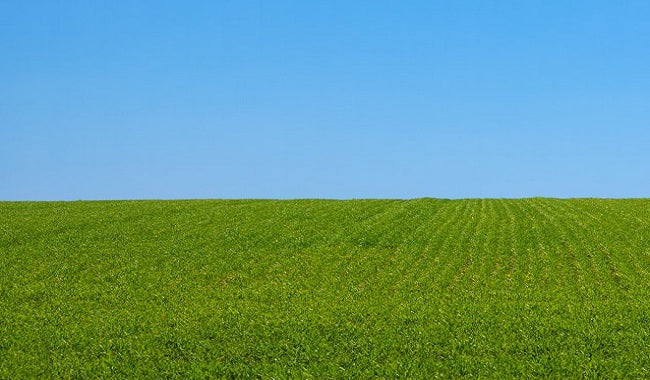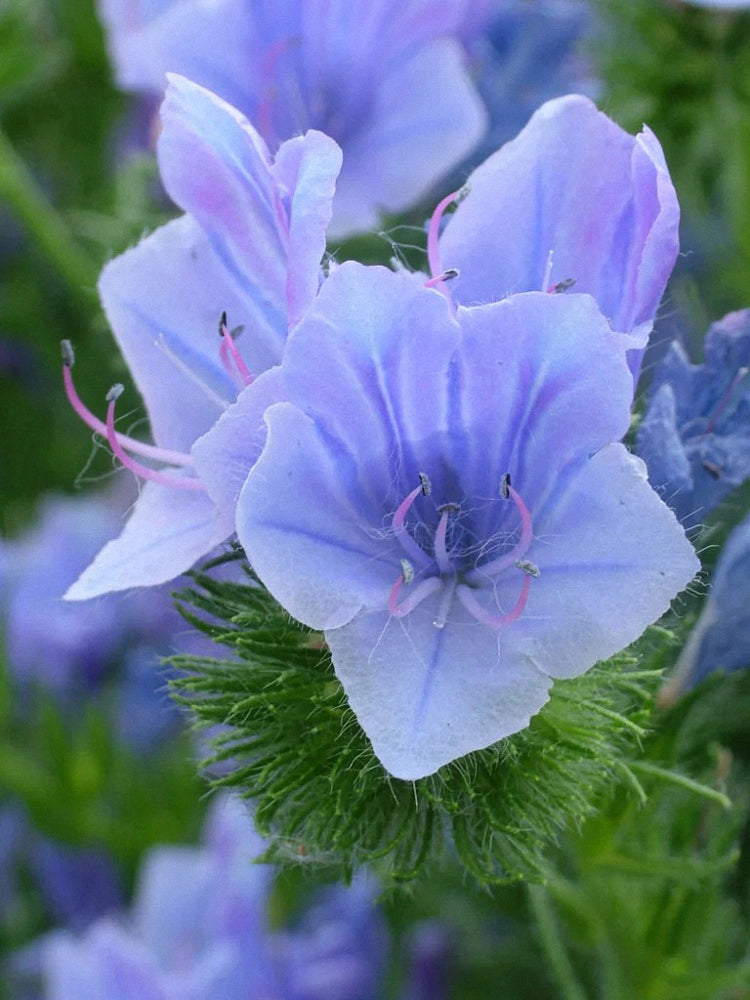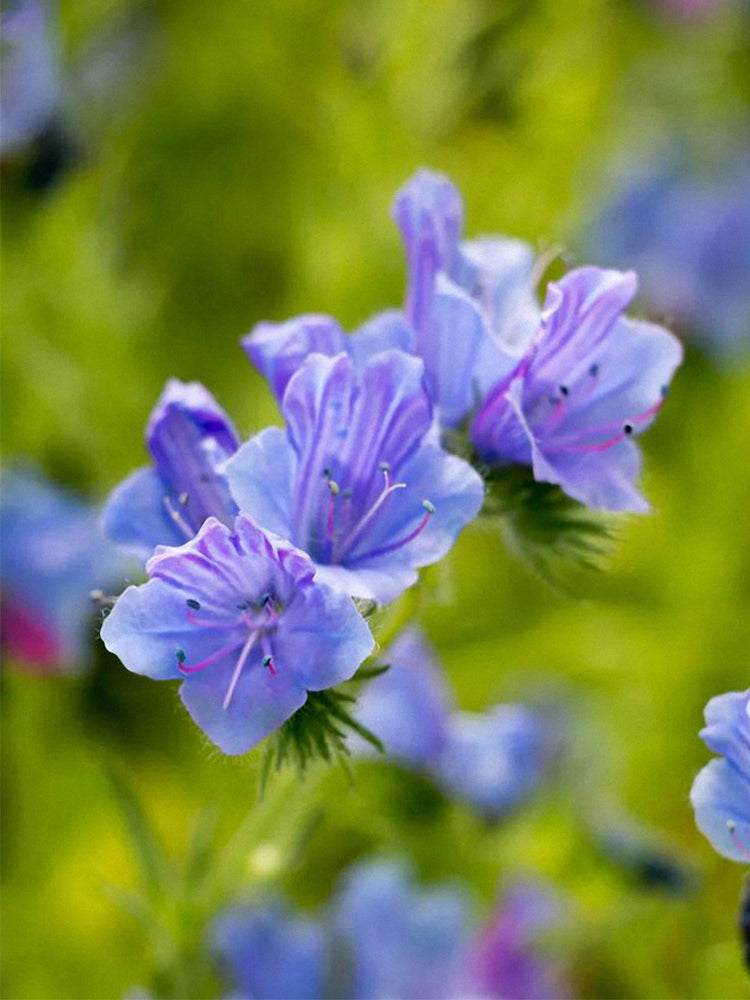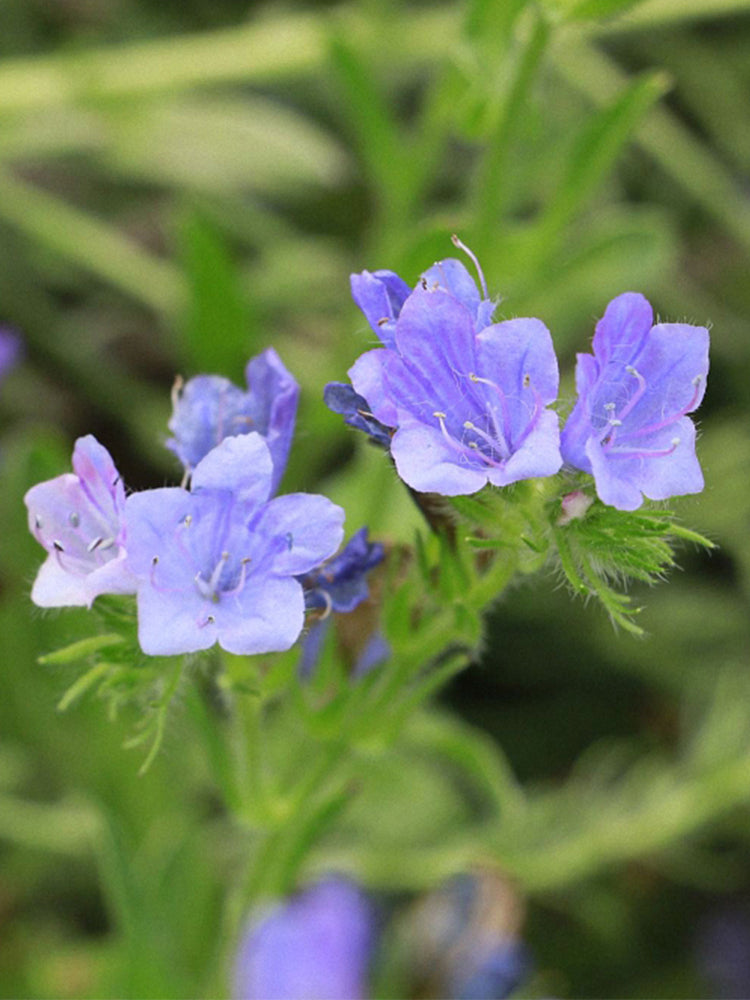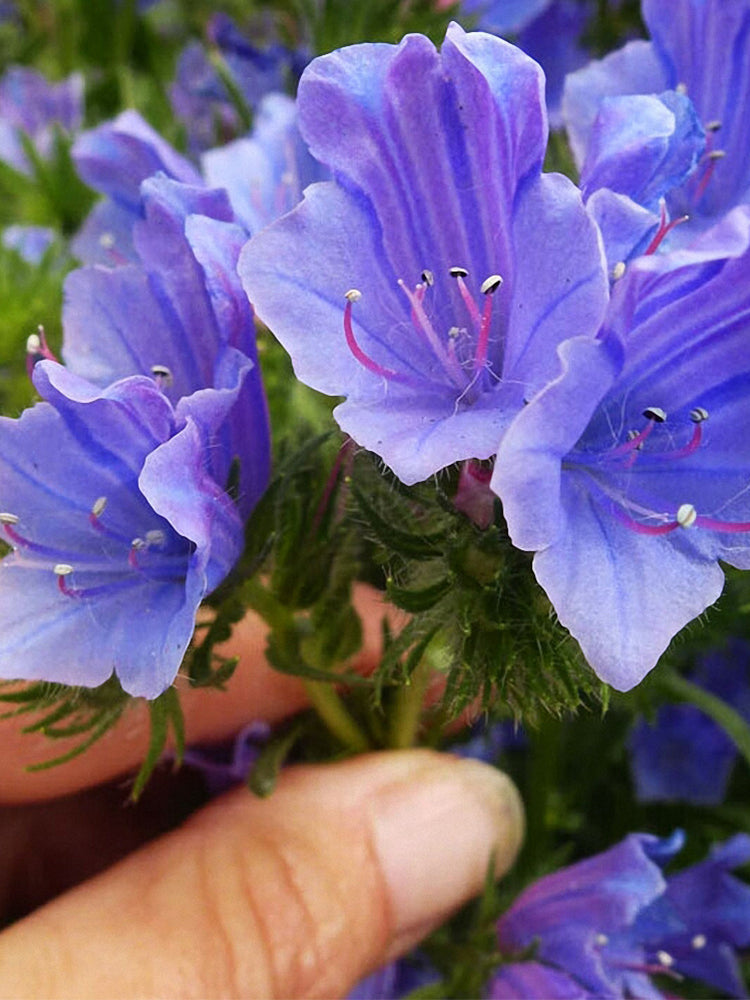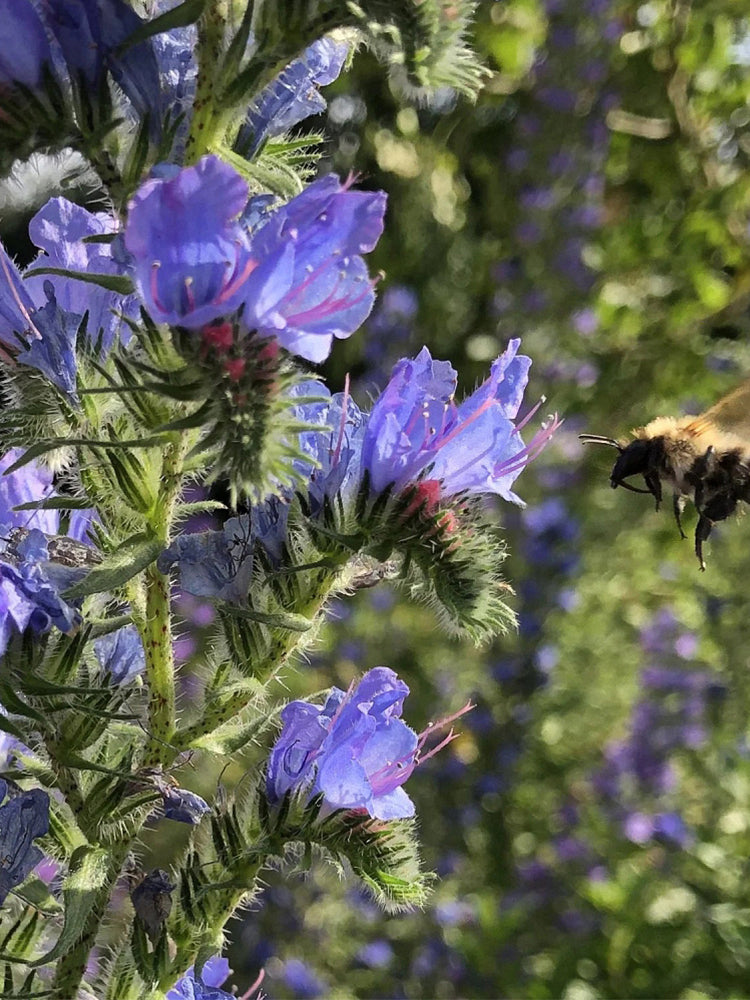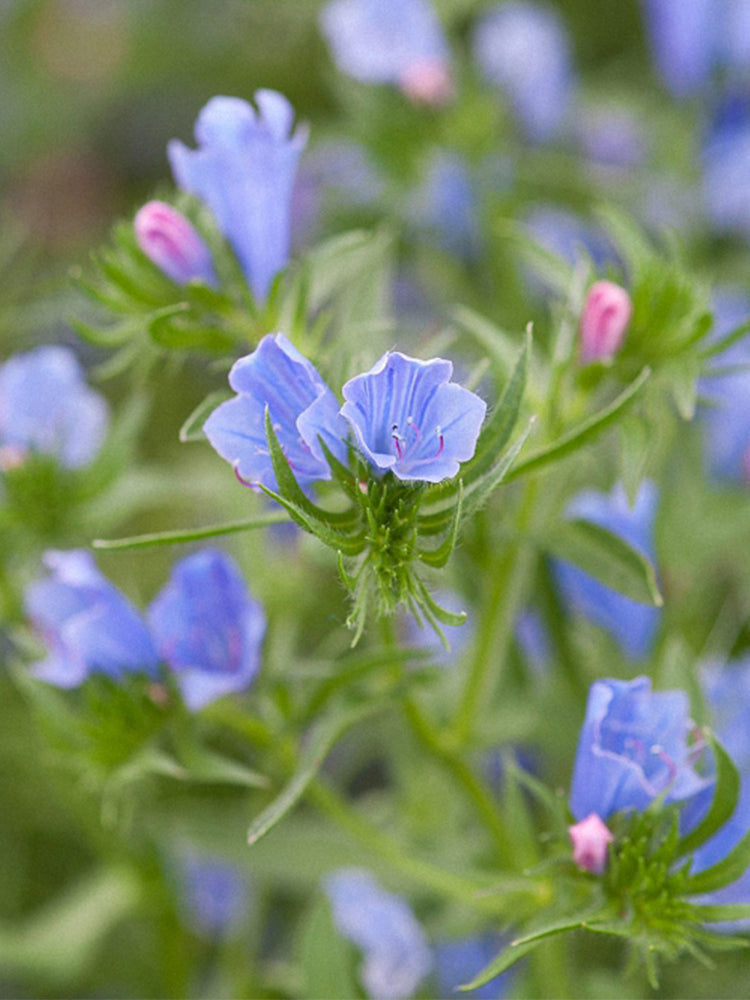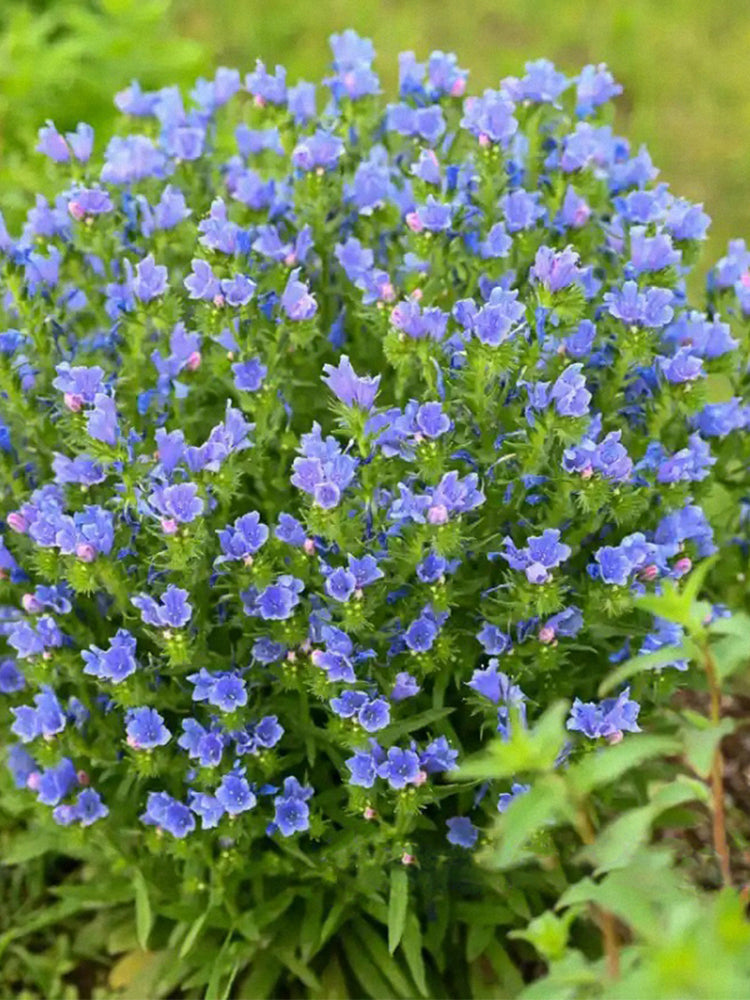BELLFARM
Viper's Bugloss (Echium vulgare)
Sale
Sold out
Regular price
$2.99 USD
Regular price
$4.99 USD
Sale price
$2.99 USD
Unit price
per
Couldn't load pickup availability
-
5-14 Days delivery.
-
Ship out within 24 hours.
Varietal Characteristics:
- Viper's Bugloss (Echium vulgare L.) is a biennial herbaceous plant of the genus Echium (Boraginaceae family), typically reaching 30–100 cm in height. Its distinctive morphology includes: clustered panicles during early flowering that mature into conical inflorescences; sword-shaped to narrowly lanceolate leaves with prominent midribs; and bell-shaped, predominantly blue-purple corollas on gray-green foliage. The plant blooms from June to September and fruits from August to September, exhibiting clear phenological patterns. Ecologically, it thrives in sunny, temperate climates but has limited cold tolerance and poor resistance to humidity/heat. While adaptable to various soils, it performs best in well-drained sandy loam; fertile conditions may induce excessive vegetative growth. This versatile species combines ornamental and functional value: widely used in flower beds, borders, container displays, and botanical garden spring plantings; the whole plant is medicinal with bitter, cold properties (per traditional uses); an excellent nectar source for pollinators; and seeds contain 27.5% oil with applications in cosmeceuticals and biodiesel development.
- Viper's Bugloss (Echium vulgare L.) is a biennial herbaceous plant of the genus Echium (Boraginaceae family), typically reaching 30–100 cm in height. Its distinctive morphology includes: clustered panicles during early flowering that mature into conical inflorescences; sword-shaped to narrowly lanceolate leaves with prominent midribs; and bell-shaped, predominantly blue-purple corollas on gray-green foliage. The plant blooms from June to September and fruits from August to September, exhibiting clear phenological patterns. Ecologically, it thrives in sunny, temperate climates but has limited cold tolerance and poor resistance to humidity/heat. While adaptable to various soils, it performs best in well-drained sandy loam; fertile conditions may induce excessive vegetative growth. This versatile species combines ornamental and functional value: widely used in flower beds, borders, container displays, and botanical garden spring plantings; the whole plant is medicinal with bitter, cold properties (per traditional uses); an excellent nectar source for pollinators; and seeds contain 27.5% oil with applications in cosmeceuticals and biodiesel development.
